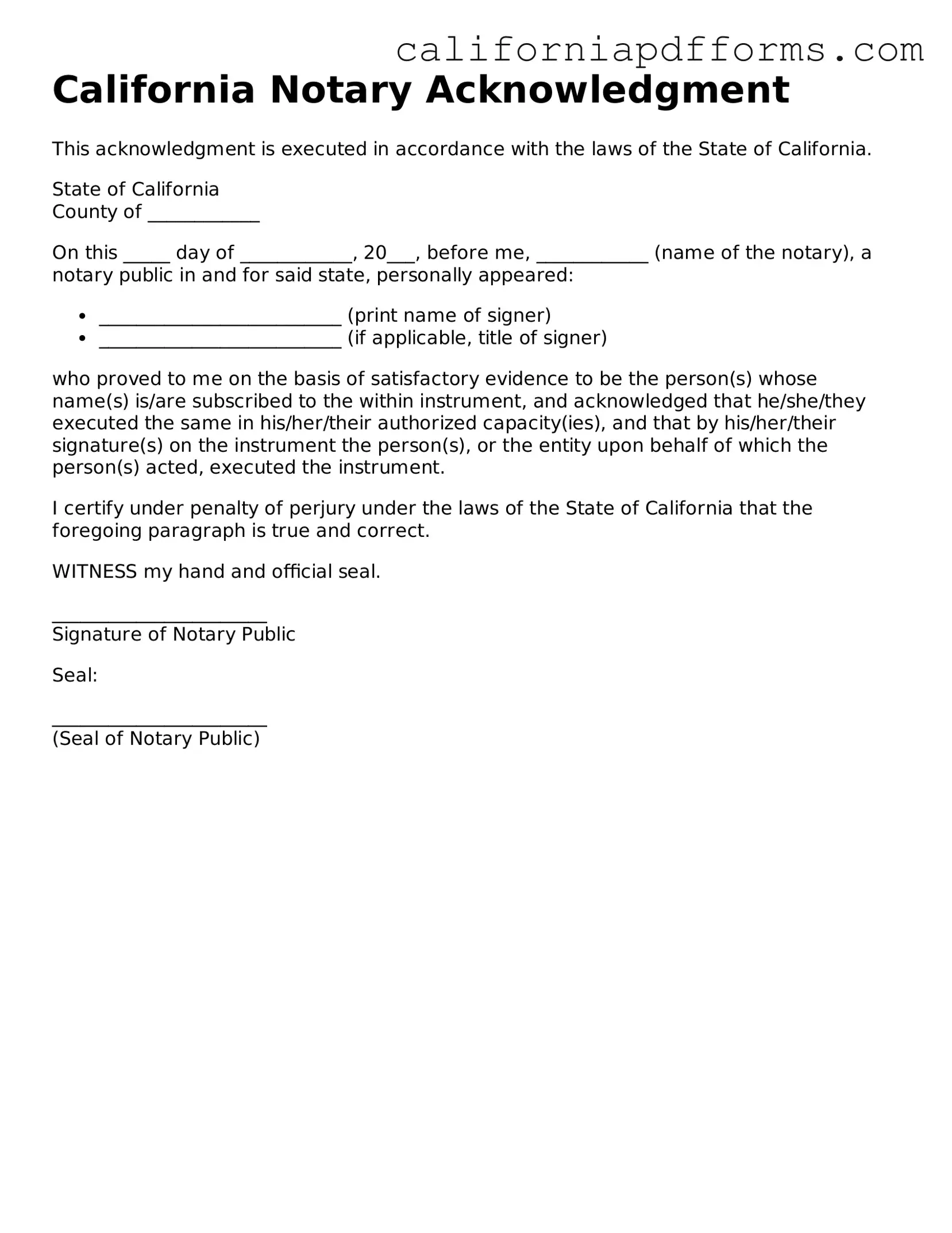The California Notary Acknowledgement form is a legal document that verifies the identity of a signer and confirms that they willingly signed a document. This form is often used in various transactions, such as real estate deals, legal agreements, and other official documents requiring notarization.
Why is a Notary Acknowledgement important?
A Notary Acknowledgement serves several crucial purposes. It helps ensure the authenticity of the signature on a document, which can prevent fraud. Additionally, it provides a layer of protection for both the signer and the recipient of the document, as it confirms that the signer acted voluntarily and with an understanding of the document's contents.
Who can act as a notary public in California?
In California, a notary public must be commissioned by the Secretary of State. To become a notary, an individual must meet certain qualifications, including being at least 18 years old, a resident of California, and passing a background check. Notaries are trained to perform their duties and are required to adhere to state laws and regulations.
A Notary Acknowledgement form generally includes the following information:
-
The name and address of the signer.
-
The date the document was signed.
-
A statement confirming that the signer personally appeared before the notary.
-
The notary's signature and seal.
It may also include additional details depending on the specific requirements of the document being notarized.
How does one complete a Notary Acknowledgement?
To complete a Notary Acknowledgement, follow these steps:
-
Ensure that the signer is present and has a valid form of identification.
-
Have the signer read the document they are signing.
-
Once the signer is ready, the notary will fill out the Acknowledgement form, including the required information.
-
The signer must then sign the document in the presence of the notary.
-
Finally, the notary will sign and affix their seal to the Acknowledgement form.
Yes, California allows remote online notarization under certain conditions. However, both the notary and the signer must use approved technology to ensure the process complies with state regulations. It's essential to confirm that the notary is authorized to perform remote notarizations before proceeding.
What happens if a Notary Acknowledgement is improperly completed?
If a Notary Acknowledgement is improperly completed, it may lead to legal complications. The document could be deemed invalid, which may affect any agreements or transactions relying on it. In such cases, it is advisable to consult with a legal professional to determine the best course of action.
Are there fees associated with notarization in California?
Yes, notaries in California are permitted to charge a fee for their services. As of the latest regulations, the maximum fee for a standard notarization is $15 per signature. However, additional fees may apply for services such as travel or additional copies. It is always wise to discuss fees upfront with the notary.
Where can I find a notary public in California?
Notaries can be found in various locations, including banks, law offices, and dedicated notary services. Additionally, many notaries offer mobile services and can travel to meet clients. Online directories are also available to help locate a notary in your area.
Is a Notary Acknowledgement the same as a Notarized Signature?
While related, a Notary Acknowledgement and a notarized signature are not the same. A notarized signature refers to the act of the notary witnessing a person sign a document. In contrast, a Notary Acknowledgement is a specific form that confirms the signer’s identity and willingness to sign. Both serve to validate the signing process, but they have distinct functions.
